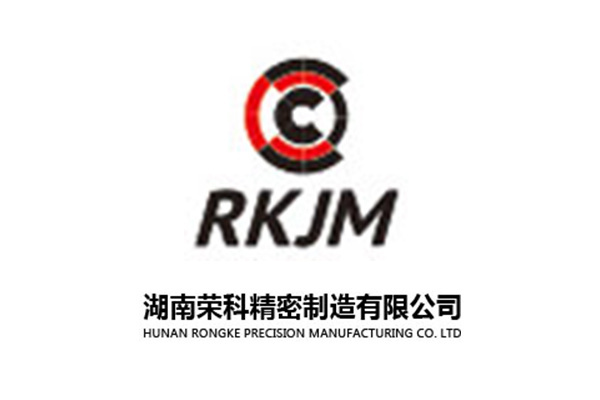Media Information
MEDIA INFORMATION
People-oriented integrity first, development and innovation, cooperation and win-win
Causes and Preventive Measures of Heat Treatment Deformation of Precision Mould
Category: Industry News
2024-02-02
One. Influence of mold materials
1. Mold selection
A mold enterprise from the material selection and heat treatment simple consideration, choose T10A steel manufacturing cross-sectional size difference, requires less deformation after quenching more complex mold, hardness requirements 56-60HRC. After heat treatment, the hardness of the mold meets the technical requirements, but the mold is deformed and cannot be used, causing the mold to be scrapped. Later, the company used micro-deformed steel Cr12 steel manufacturing, mold after heat treatment hardness and deformation are in line with the requirements. Preventive measures: manufacturing precision complex, requiring small deformation of the mold, to try to choose micro deformation steel, such as air quenching steel.
2. The influence of mold material
A factory sent a batch of Cr12MoV steel to make more complicated molds with Φ60mm round holes. After heat treatment of the molds, some of the round holes of the molds appeared oval, causing the molds to be scrapped. Generally speaking, Cr12MoV steel is slightly deformed and should not be deformed. Our metallographic analysis of the severely deformed dies found that the die steel contains a large number of eutectic carbides, and is banded and massive distribution.
(1) the cause of die ellipse (deformation)
This is because the existence of uneven carbides distributed in a certain direction in die steel. The expansion coefficient of carbides is about 30% smaller than that of the matrix structure of steel. When heating, it prevents the inner hole of the die from expanding, and when cooling, it prevents the inner hole of the die from shrinking, causing uneven deformation of the inner hole of the die, thus making the round hole of the die appear oval.
(2) Preventive measures
① In the manufacture of precision and complex molds, try to choose the mold steel with less carbide segregation, not to be cheap, and choose the steel with poor material produced by small steel mills.
The existence of serious segregation of carbide die steel, to a reasonable forging to break the carbide crystal block, reduce the uneven distribution of carbide grade, eliminate the performance of anisotropy.
The forging of the die steel to the quenching and tempering heat treatment, so that the carbide distribution is uniform, small and dispersed sorbite organization, so as to reduce the deformation of the precision complex mold after heat treatment.
For the larger size or can not be forged mold, can be used solid solution double refinement treatment, so that the carbide refinement, uniform distribution, edge rounding, can achieve the purpose of reducing the mold heat treatment deformation.
II. Influence of die structure design
Some mold material selection and steel material is very good, often because the mold structure design is not reasonable, such as thin edge, sharp corner, groove, mutation step, thickness disparity, etc., resulting in mold deformation after heat treatment.
1. Causes of deformation
Due to the uneven thickness of the mold or the existence of sharp rounded corners, the thermal stress and tissue stress between the various parts of the mold are different during quenching, which leads to the different volume expansion of the various parts and the deformation of the mold after quenching.
2. Preventive measures
When designing the mold, in the case of meeting the actual production needs, the thickness of the mold should be minimized, and the structural asymmetry should be minimized. At the junction of the thickness of the mold, the structural design such as smooth transition should be adopted as much as possible. The machining allowance is reserved according to the deformation law of the mold, so that the mold will not be scrapped due to the deformation of the mold after quenching. For molds with particularly complex shapes, a combined structure can be used for uniform cooling during quenching.
Three. Mold manufacturing process and the influence of residual stress
It is often found in the factory that some molds with complex shapes and high precision requirements have large deformation after heat treatment. After careful investigation, it is found that the mold has not been subjected to any pre-heat treatment in the machining and final heat treatment stages.
1. Causes of deformation
The residual stress in the machining process and the stress after quenching increase the deformation of the mold after heat treatment.
2. Preventive measures
(1) After rough machining and before semi-finishing, stress relief annealing shall be carried out once, I .e. (630-680)℃×(3-4)h furnace cooling to below 500 ℃ and air cooling, or 400 ℃×(2-3)h stress relief treatment can be adopted.
(2) Reduce the quenching temperature and reduce the residual stress after quenching.
(3) the use of quenching oil 170oC oil air cooling (graded quenching).
(4) the use of isothermal quenching process can reduce the quenching residual stress.
The above measures can reduce the residual stress of the die after quenching and the deformation of the die is small.
Four. Effect of heat treatment on heating process
Effect of heating speed
The deformation of the mold after heat treatment is generally considered to be caused by cooling, which is incorrect. Mold, especially complex mold, processing technology is correct or not on the deformation of the mold often have a greater impact on some of the mold heating process can be clearly seen, the heating speed is faster, often produce larger deformation.
(1) Causes of deformation
When any metal is heated, it will expand. When steel is heated, the uneven temperature of each part in the same mold (that is, the uneven heating) will inevitably cause the inconsistency of the expansion of each part of the mold, thus forming the internal stress due to uneven heating. At the temperature below the phase change point of steel, uneven heating mainly produces thermal stress, and uneven heating beyond the phase change temperature will also produce unequal time of organizational transformation, which will produce organizational stress. Therefore, the faster the heating speed, the greater the temperature difference between the surface and the center of the mold, the greater the stress, and the greater the deformation of the mold after heat treatment.
(2) Preventive measures
Complex molds should be heated slowly when heated below the phase change point. In general, the mold vacuum heat treatment deformation is much smaller than the salt bath furnace heating quenching. Preheating is adopted. For low-alloy steel molds, one preheating (550-620oC) can be used; for high-alloy steel molds, two preheating (550-620oC and 800-850oC) should be used.
Previous: Analysis of Die Finishing Control
RELATED INFORMATION
How to effectively improve the accuracy of mold processing
With the rapid development of China's economic construction and the improvement of people's living standards, China's construction industry is developing rapidly, and the demand for aluminum profiles is increasing. Therefore, the demand for aluminum alloy extrusion die design, manufacturing and production is also increasing.
View Details




